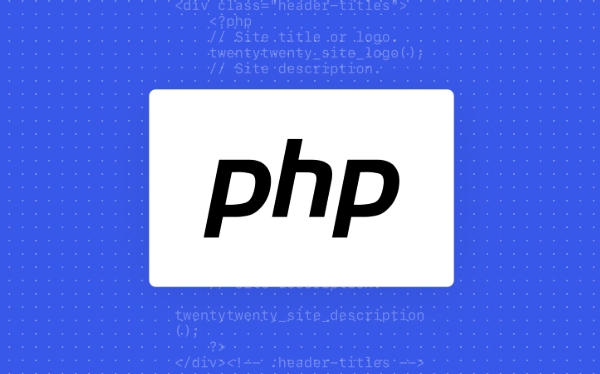The most common method of connecting to a MySQL database is to use PHP's mysqli or PDO extension. 1. Use mysqli: Create connection functions through object-oriented mode, set the host, username, password and database name, terminate the script when the connection fails and output error information; pay attention to enabling mysqli extension, avoid directly exposing errors, and manage configuration information independently. 2. Use PDO: Create a PDO instance and set connection parameters and error handling mode to catch exceptions to handle connection errors; its advantages include supporting preprocessing statements, better error handling and object-oriented development. Common problems include username or password errors, database service not started, host address errors, or firewall restrict access to ports; it is recommended to encapsulate the connection function into independent files and manage them in a unified manner, and the production environment records errors to the log instead of directly displaying them.

The most common method to connect to a MySQL database is to use the mysqli or PDO extension provided by PHP. Below I will give a simple but practical connection function, which is suitable for project requirements in different scenarios.

Connect to the database using mysqli
mysqli is an extension in PHP that is specifically used to operate MySQL, supporting object-oriented and procedural writing. Here is a connection function that uses object-oriented method:
function connectDB() {
$host = 'localhost';
$username = 'your_username';
$password = 'your_password';
$database = 'your_database';
$conn = new mysqli($host, $username, $password, $database);
if ($conn->connect_error) {
die("Connection failed: " . $conn->connect_error);
}
return $conn;
}How to use:

$conn = connectDB(); // Next, you can perform query and other operations
Note:
- Make sure
mysqliextension is enabled on the server - If the connection fails, it is recommended not to directly output error messages to prevent the exposure of sensitive information
- Database configuration information can be placed in a separate configuration file for convenient unified management
Connecting to a database using PDO
PDO is a more general database abstraction layer that supports multiple database types. If you consider possible switching database types in the future, it is recommended to use PDO.

function connectDB() {
$host = 'localhost';
$dbname = 'your_database';
$username = 'your_username';
$password = 'your_password';
try {
$conn = new PDO("mysql:host=$host;dbname=$dbname;charset=utf8mb4", $username, $password);
$conn->setAttribute(PDO::ATTR_ERRMODE, PDO::ERRMODE_EXCEPTION);
return $conn;
} catch (PDOException $e) {
die("Connection failed: " . $e->getMessage());
}
}advantage:
- Supports preprocessing statements to prevent SQL injection
- Better error handling mechanism
- More suitable for object-oriented development
FAQs and Suggestions
-
Common reasons why you can't connect to a database:
- Incorrect database username or password
- Database service not started
- The database host address is incorrect (for example, the remote database should be filled in the IP address)
- Firewall restricts access to database ports (usually 3306)
It is recommended to encapsulate the connection function into a class or a separate file: this way, the database connection can be managed uniformly and avoid duplicate code. For example, you can create a
Database.phpfile that is specifically designed to handle connections and closures.Do not display original error messages in the production environment: record the error messages into a log file, rather than output them directly to the page to prevent them from exploiting them.
Basically that's it. Connecting to the database is the basic step of development. Although it is not complicated, handling the details well can avoid many subsequent problems.
The above is the detailed content of php function to connect to mysql database. For more information, please follow other related articles on the PHP Chinese website!

Hot AI Tools

Undress AI Tool
Undress images for free

Undresser.AI Undress
AI-powered app for creating realistic nude photos

AI Clothes Remover
Online AI tool for removing clothes from photos.

Clothoff.io
AI clothes remover

Video Face Swap
Swap faces in any video effortlessly with our completely free AI face swap tool!

Hot Article

Hot Tools

Notepad++7.3.1
Easy-to-use and free code editor

SublimeText3 Chinese version
Chinese version, very easy to use

Zend Studio 13.0.1
Powerful PHP integrated development environment

Dreamweaver CS6
Visual web development tools

SublimeText3 Mac version
God-level code editing software (SublimeText3)
 PHP Variable Scope Explained
Jul 17, 2025 am 04:16 AM
PHP Variable Scope Explained
Jul 17, 2025 am 04:16 AM
Common problems and solutions for PHP variable scope include: 1. The global variable cannot be accessed within the function, and it needs to be passed in using the global keyword or parameter; 2. The static variable is declared with static, and it is only initialized once and the value is maintained between multiple calls; 3. Hyperglobal variables such as $_GET and $_POST can be used directly in any scope, but you need to pay attention to safe filtering; 4. Anonymous functions need to introduce parent scope variables through the use keyword, and when modifying external variables, you need to pass a reference. Mastering these rules can help avoid errors and improve code stability.
 How to handle File Uploads securely in PHP?
Jul 08, 2025 am 02:37 AM
How to handle File Uploads securely in PHP?
Jul 08, 2025 am 02:37 AM
To safely handle PHP file uploads, you need to verify the source and type, control the file name and path, set server restrictions, and process media files twice. 1. Verify the upload source to prevent CSRF through token and detect the real MIME type through finfo_file using whitelist control; 2. Rename the file to a random string and determine the extension to store it in a non-Web directory according to the detection type; 3. PHP configuration limits the upload size and temporary directory Nginx/Apache prohibits access to the upload directory; 4. The GD library resaves the pictures to clear potential malicious data.
 Commenting Out Code in PHP
Jul 18, 2025 am 04:57 AM
Commenting Out Code in PHP
Jul 18, 2025 am 04:57 AM
There are three common methods for PHP comment code: 1. Use // or # to block one line of code, and it is recommended to use //; 2. Use /.../ to wrap code blocks with multiple lines, which cannot be nested but can be crossed; 3. Combination skills comments such as using /if(){}/ to control logic blocks, or to improve efficiency with editor shortcut keys, you should pay attention to closing symbols and avoid nesting when using them.
 How Do Generators Work in PHP?
Jul 11, 2025 am 03:12 AM
How Do Generators Work in PHP?
Jul 11, 2025 am 03:12 AM
AgeneratorinPHPisamemory-efficientwaytoiterateoverlargedatasetsbyyieldingvaluesoneatatimeinsteadofreturningthemallatonce.1.Generatorsusetheyieldkeywordtoproducevaluesondemand,reducingmemoryusage.2.Theyareusefulforhandlingbigloops,readinglargefiles,or
 Tips for Writing PHP Comments
Jul 18, 2025 am 04:51 AM
Tips for Writing PHP Comments
Jul 18, 2025 am 04:51 AM
The key to writing PHP comments is to clarify the purpose and specifications. Comments should explain "why" rather than "what was done", avoiding redundancy or too simplicity. 1. Use a unified format, such as docblock (/*/) for class and method descriptions to improve readability and tool compatibility; 2. Emphasize the reasons behind the logic, such as why JS jumps need to be output manually; 3. Add an overview description before complex code, describe the process in steps, and help understand the overall idea; 4. Use TODO and FIXME rationally to mark to-do items and problems to facilitate subsequent tracking and collaboration. Good annotations can reduce communication costs and improve code maintenance efficiency.
 Quick PHP Installation Tutorial
Jul 18, 2025 am 04:52 AM
Quick PHP Installation Tutorial
Jul 18, 2025 am 04:52 AM
ToinstallPHPquickly,useXAMPPonWindowsorHomebrewonmacOS.1.OnWindows,downloadandinstallXAMPP,selectcomponents,startApache,andplacefilesinhtdocs.2.Alternatively,manuallyinstallPHPfromphp.netandsetupaserverlikeApache.3.OnmacOS,installHomebrew,thenrun'bre
 How to access a character in a string by index in PHP
Jul 12, 2025 am 03:15 AM
How to access a character in a string by index in PHP
Jul 12, 2025 am 03:15 AM
In PHP, you can use square brackets or curly braces to obtain string specific index characters, but square brackets are recommended; the index starts from 0, and the access outside the range returns a null value and cannot be assigned a value; mb_substr is required to handle multi-byte characters. For example: $str="hello";echo$str[0]; output h; and Chinese characters such as mb_substr($str,1,1) need to obtain the correct result; in actual applications, the length of the string should be checked before looping, dynamic strings need to be verified for validity, and multilingual projects recommend using multi-byte security functions uniformly.
 Learning PHP: A Beginner's Guide
Jul 18, 2025 am 04:54 AM
Learning PHP: A Beginner's Guide
Jul 18, 2025 am 04:54 AM
TolearnPHPeffectively,startbysettingupalocalserverenvironmentusingtoolslikeXAMPPandacodeeditorlikeVSCode.1)InstallXAMPPforApache,MySQL,andPHP.2)Useacodeeditorforsyntaxsupport.3)TestyoursetupwithasimplePHPfile.Next,learnPHPbasicsincludingvariables,ech






